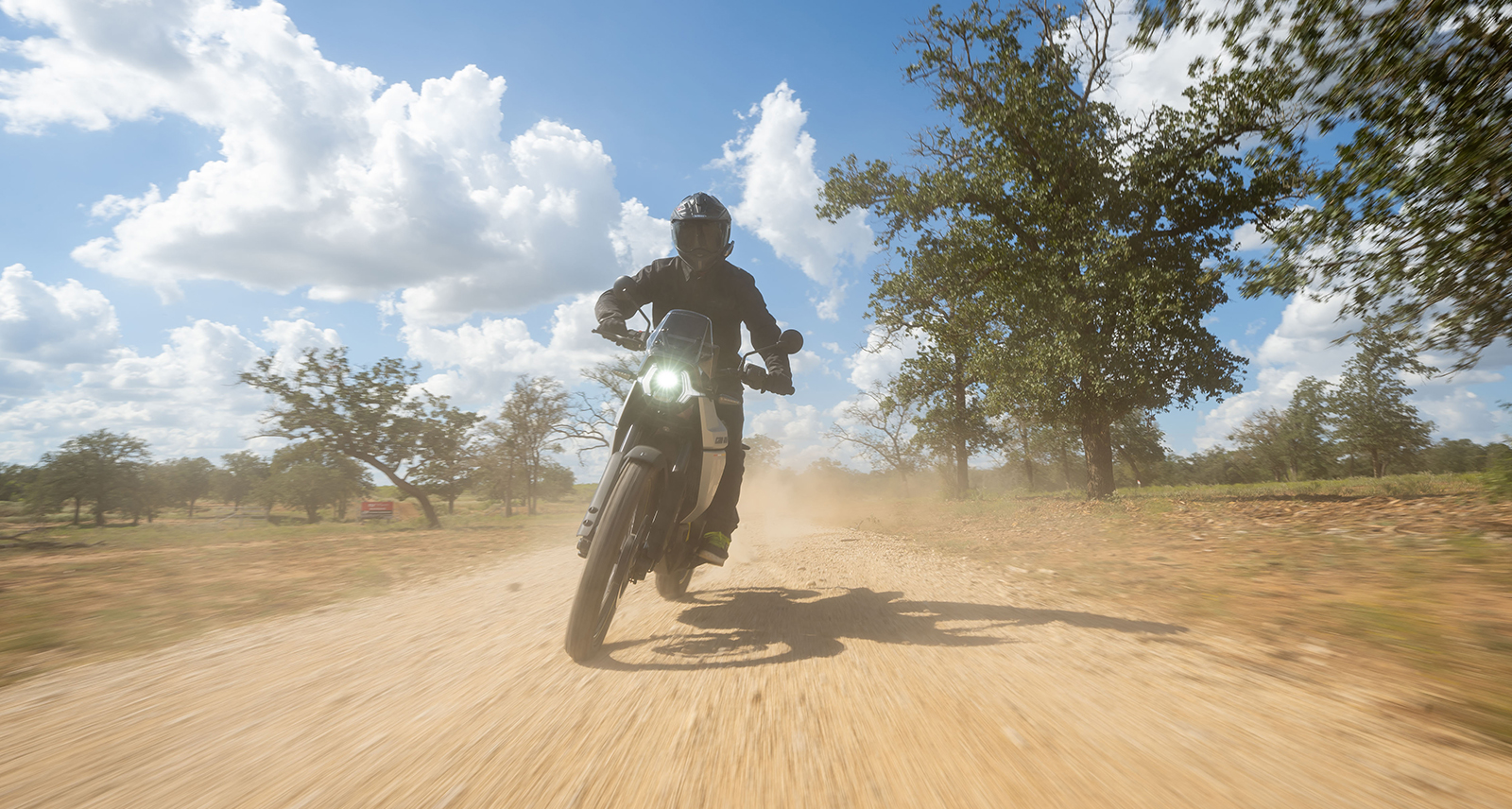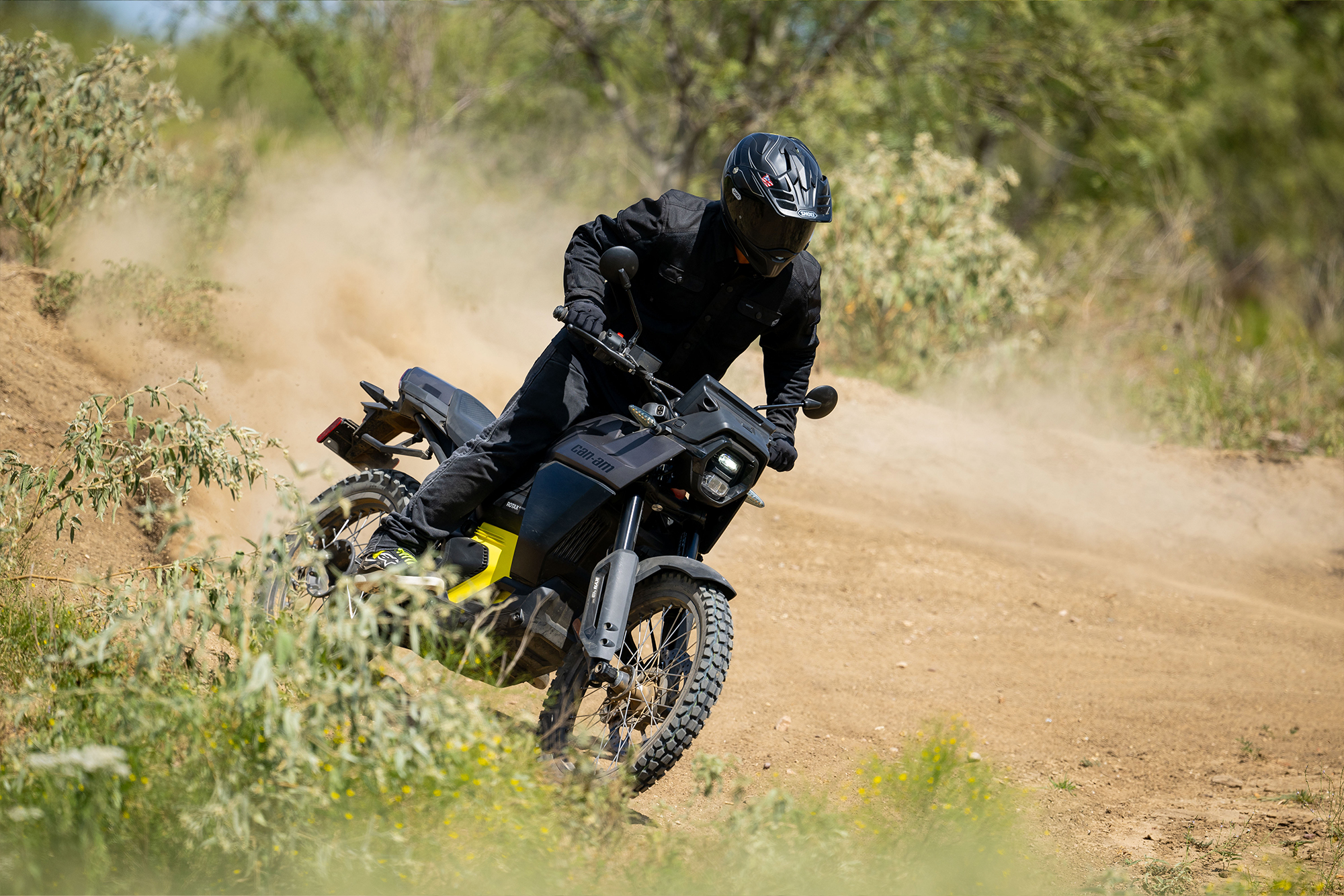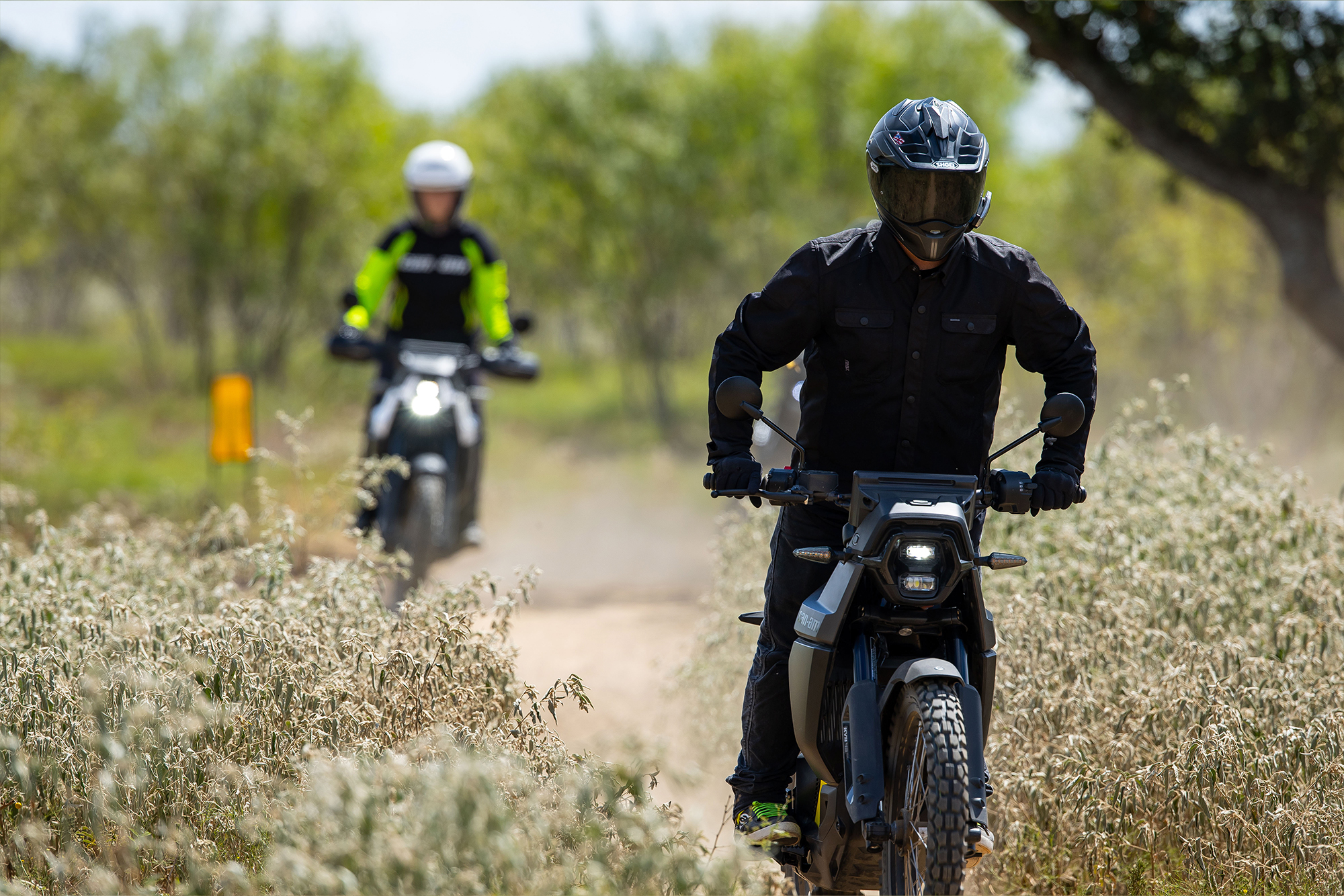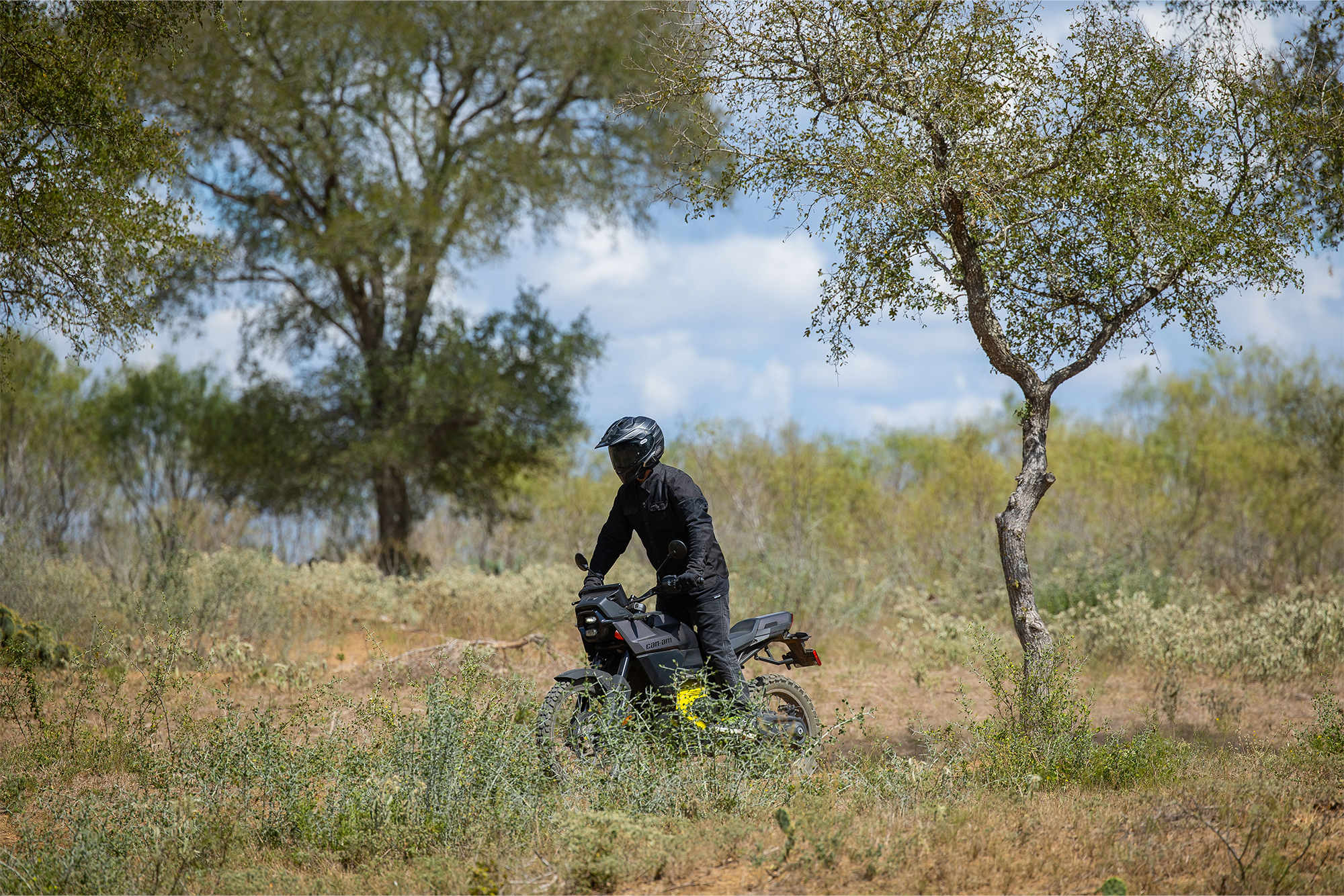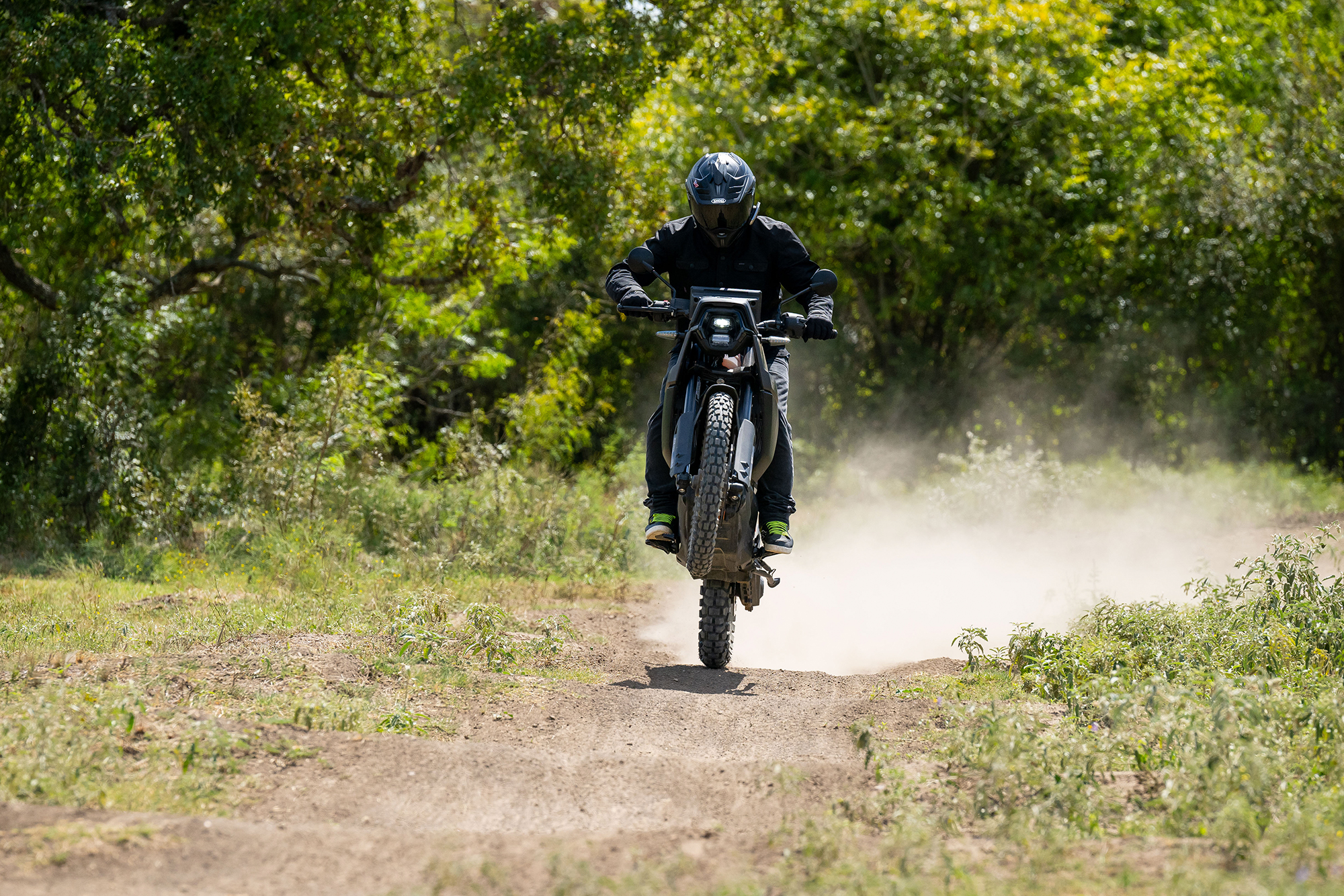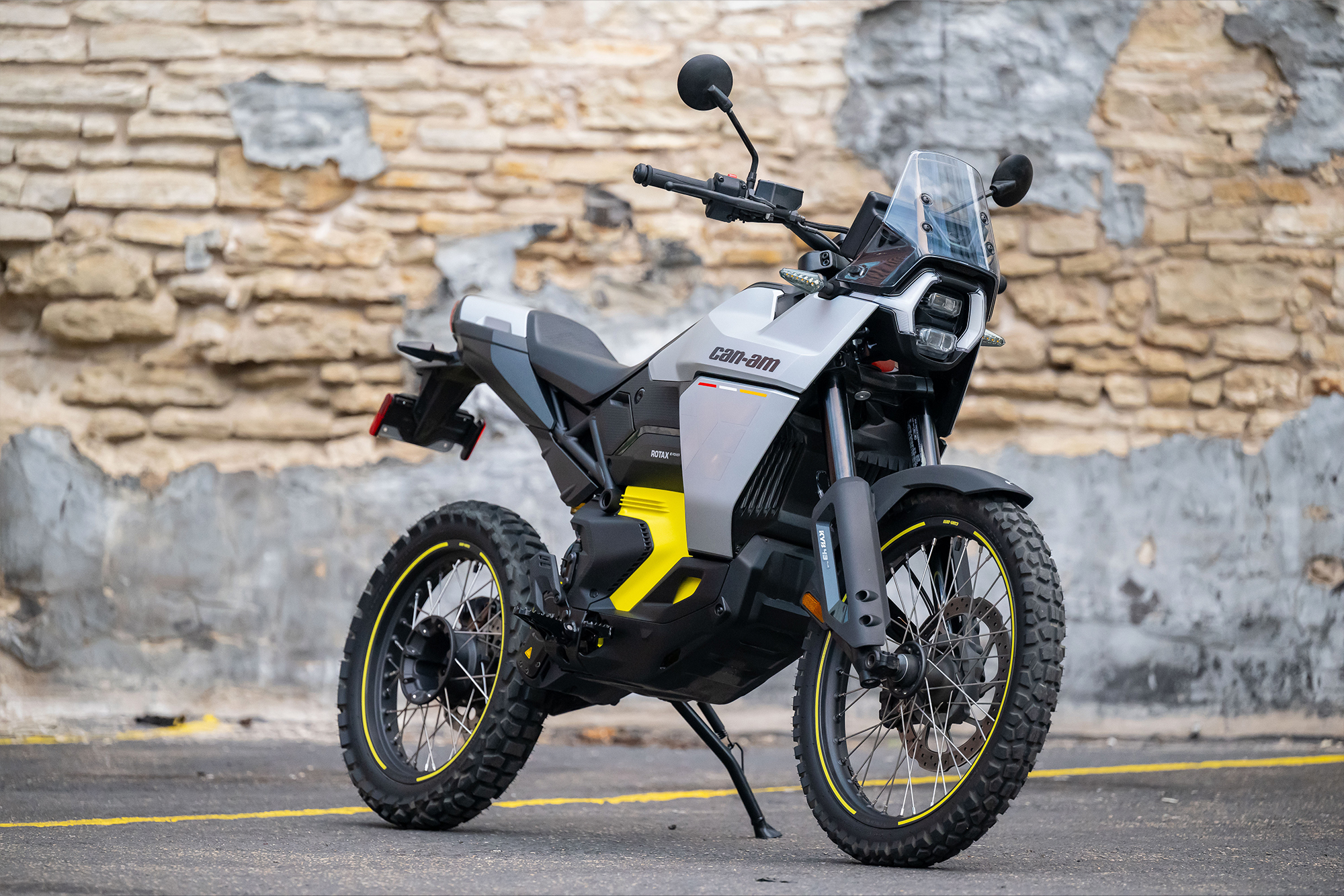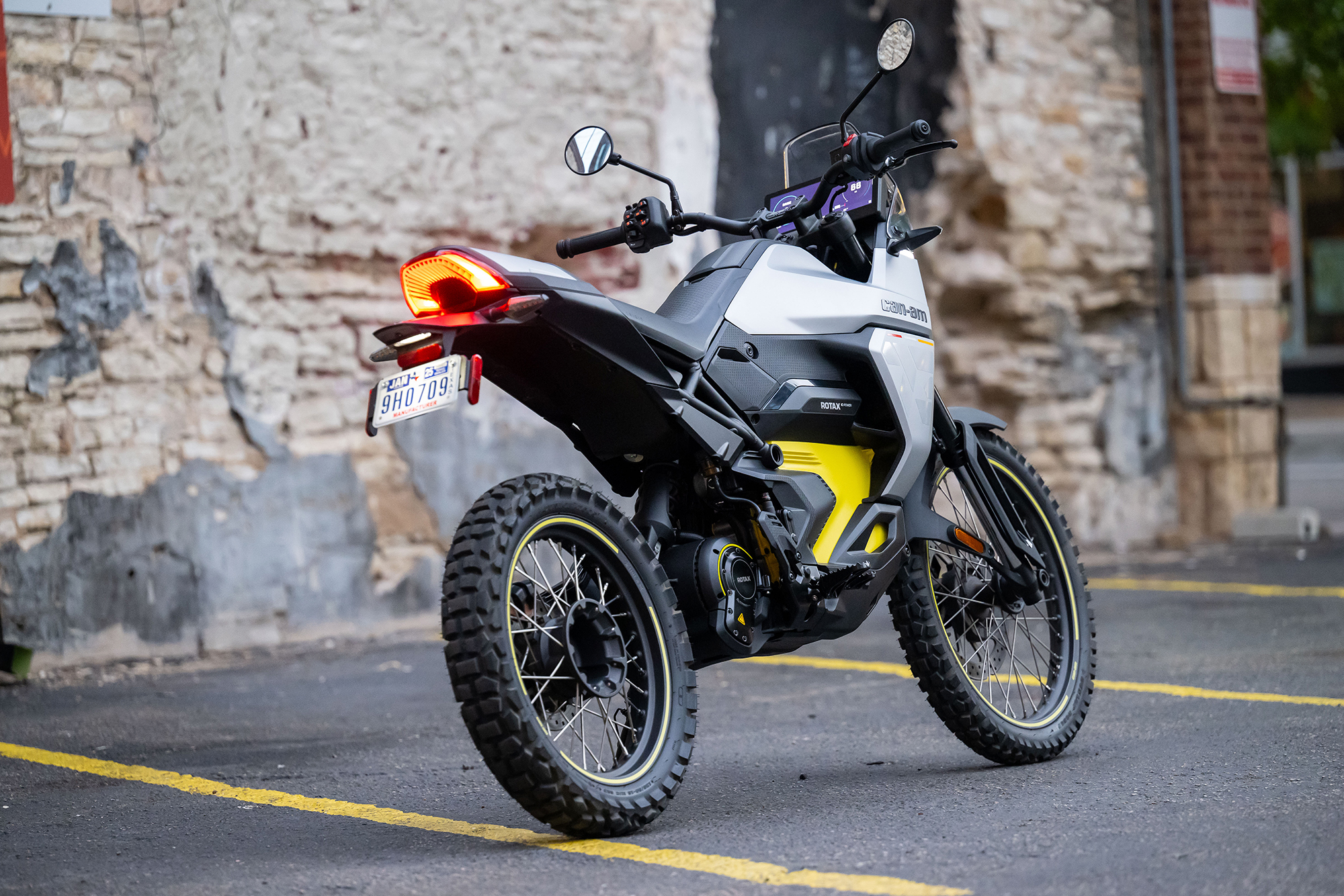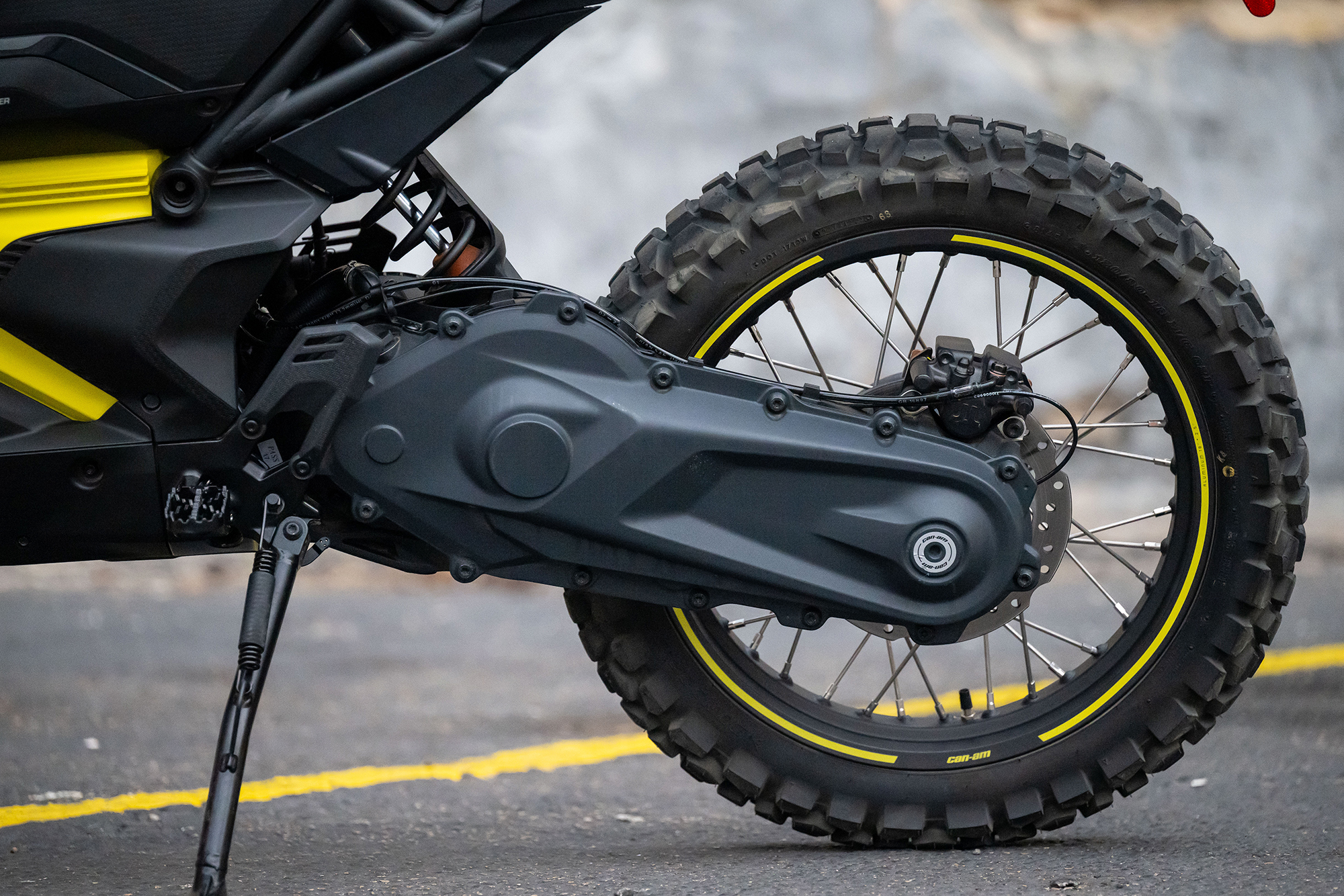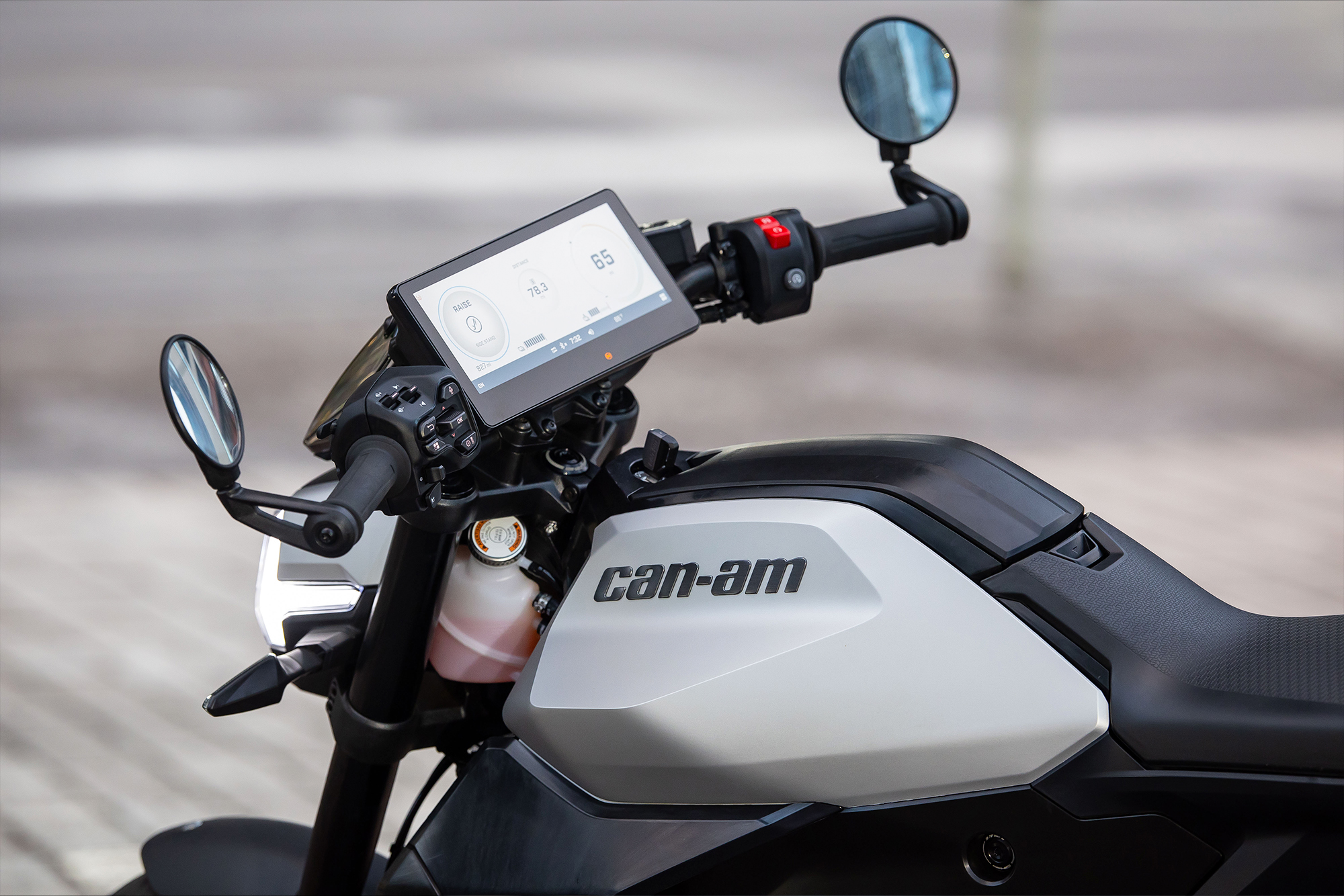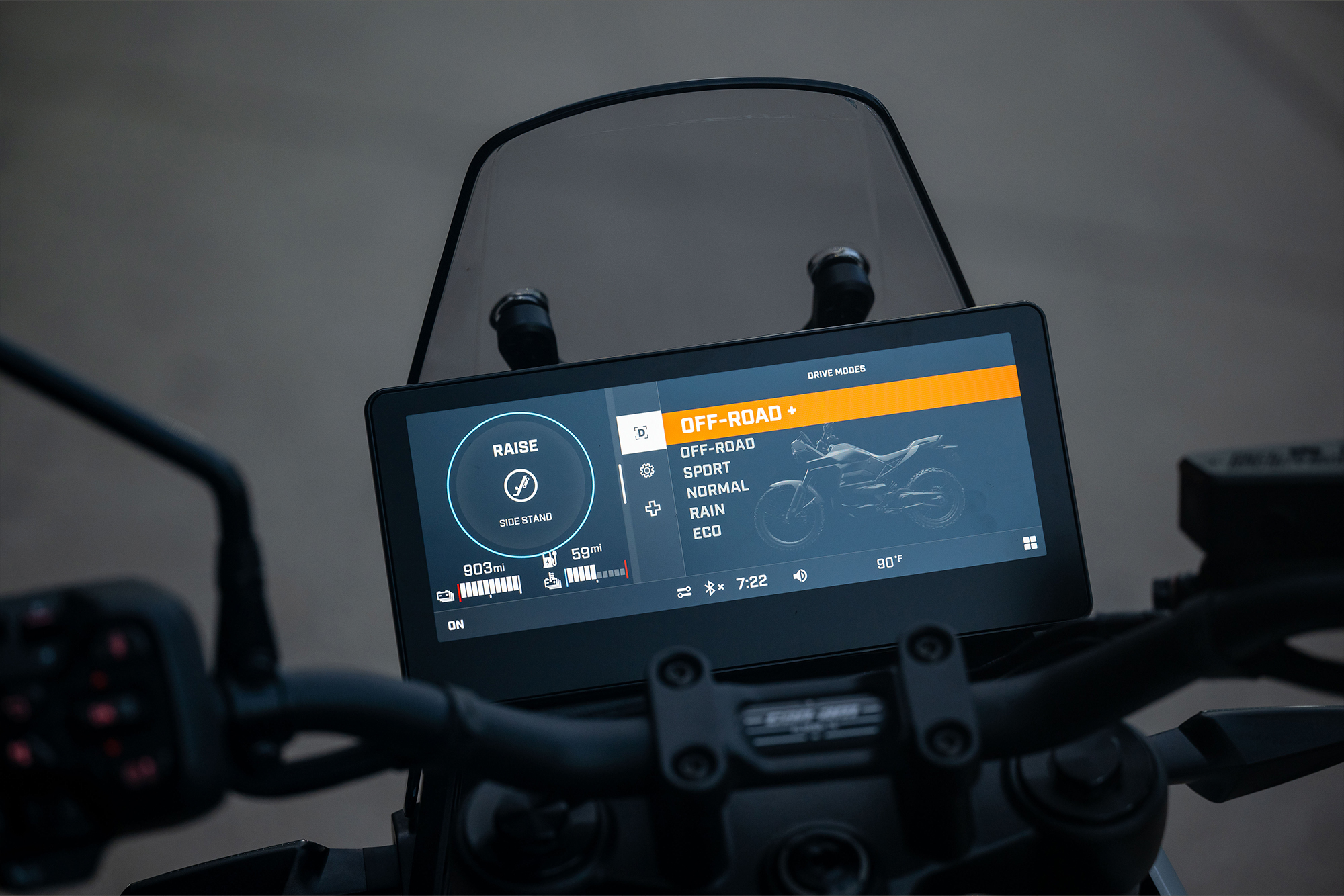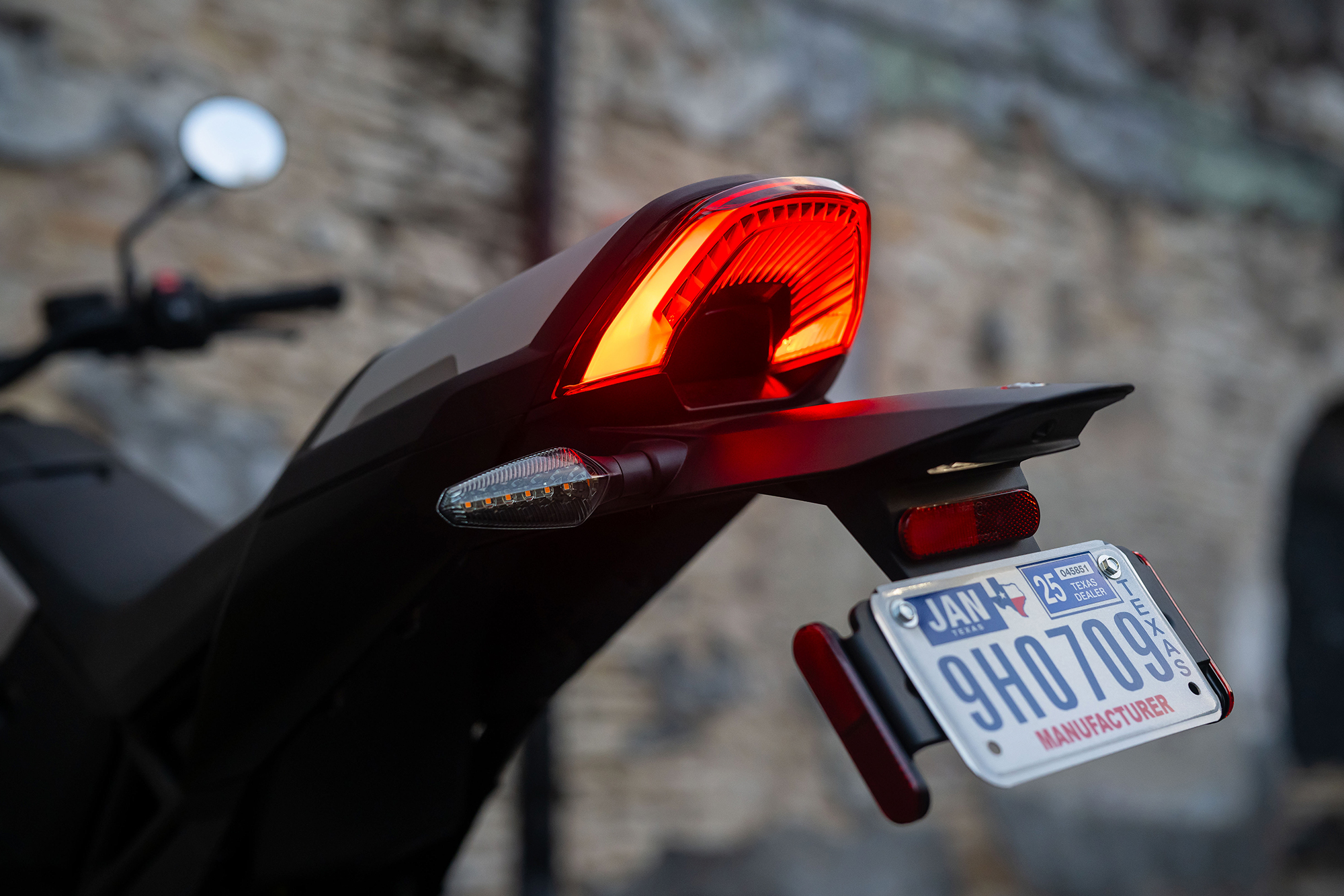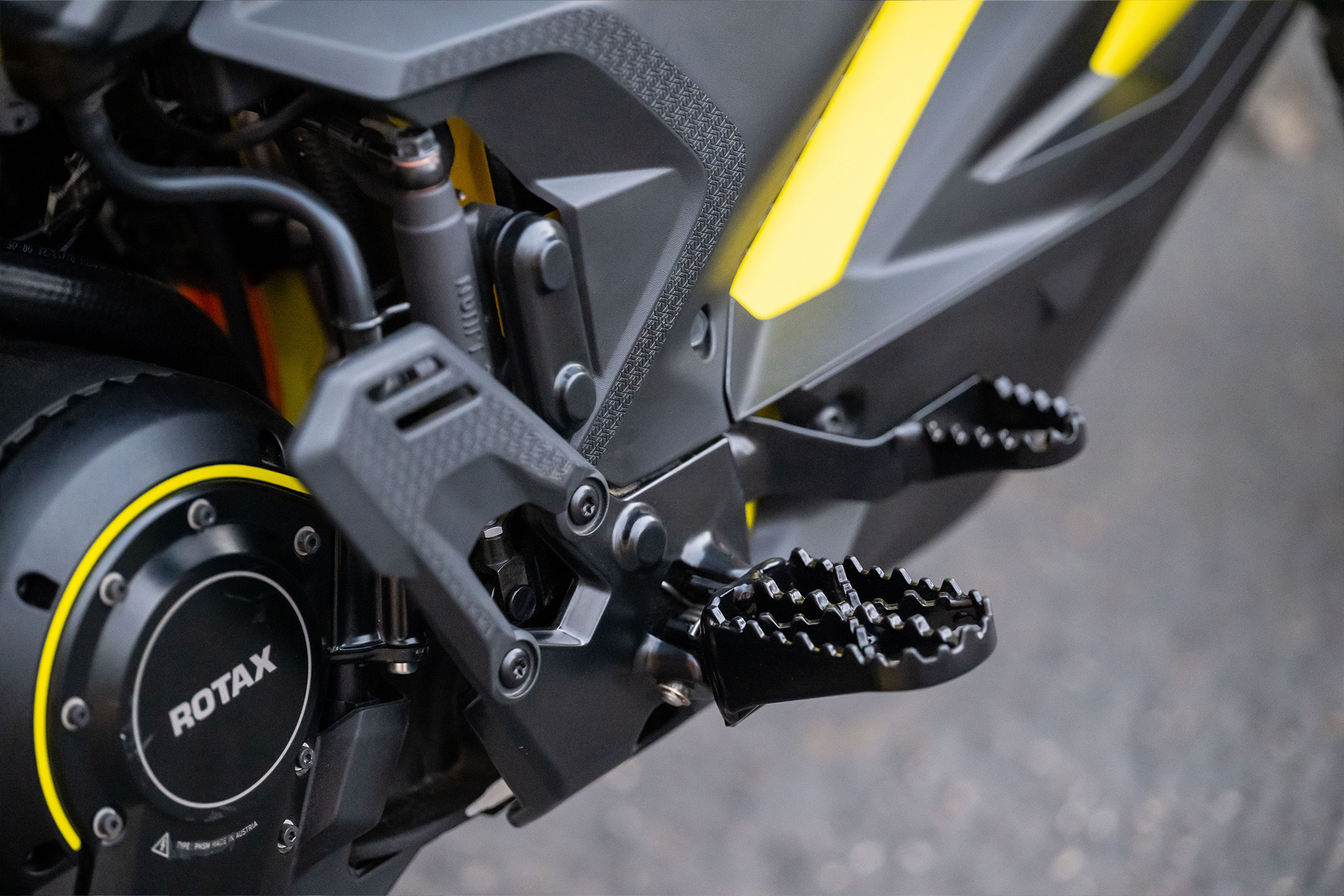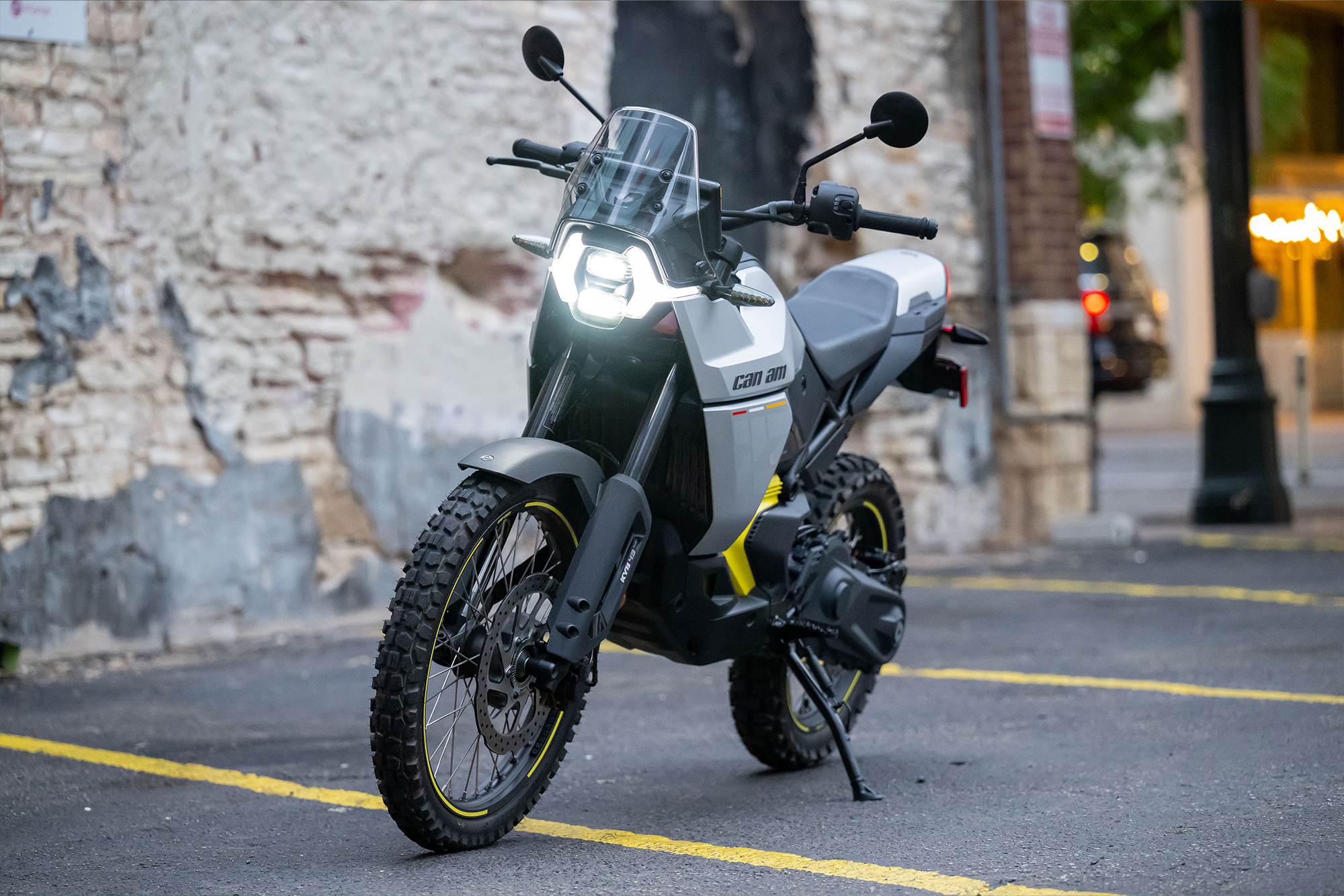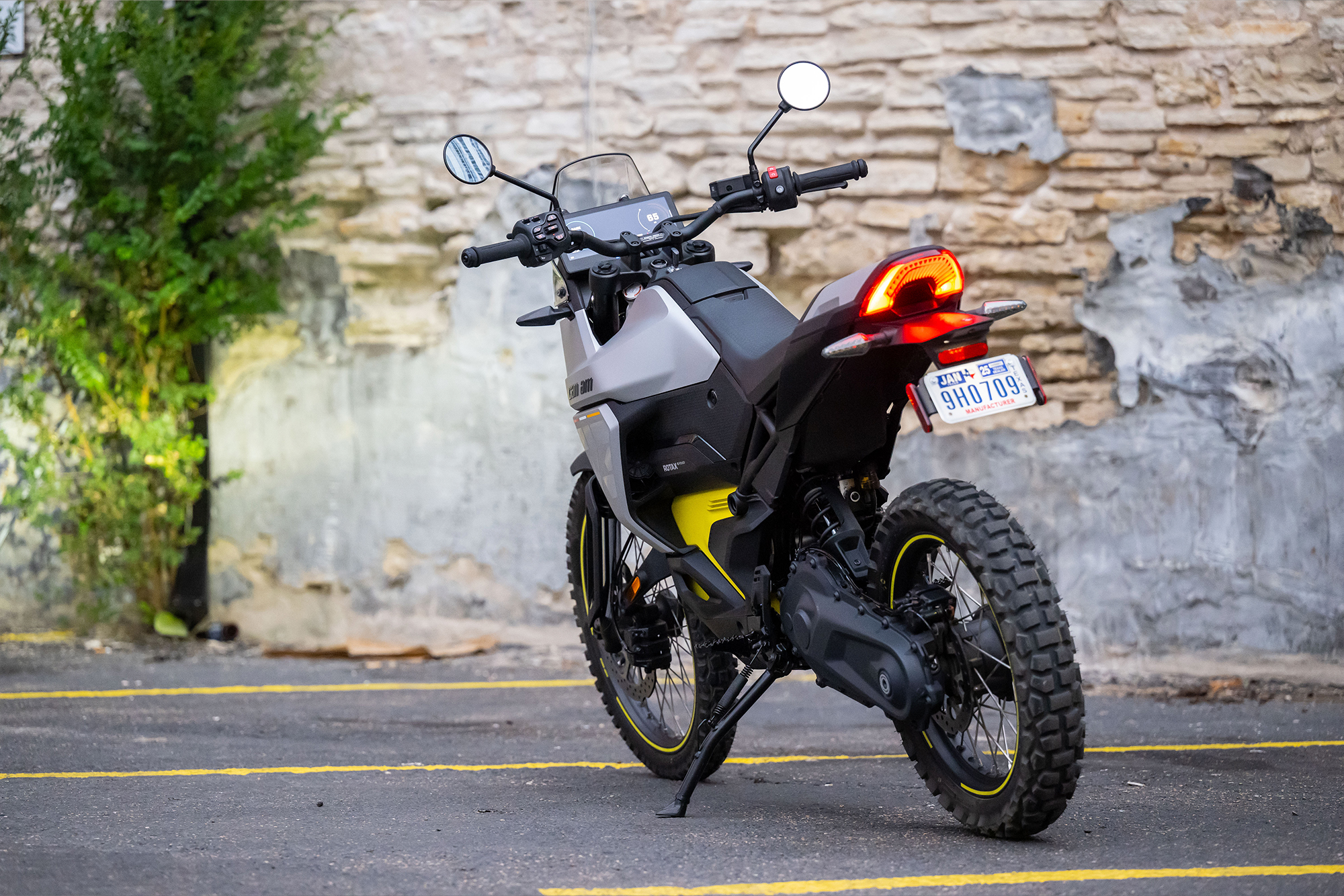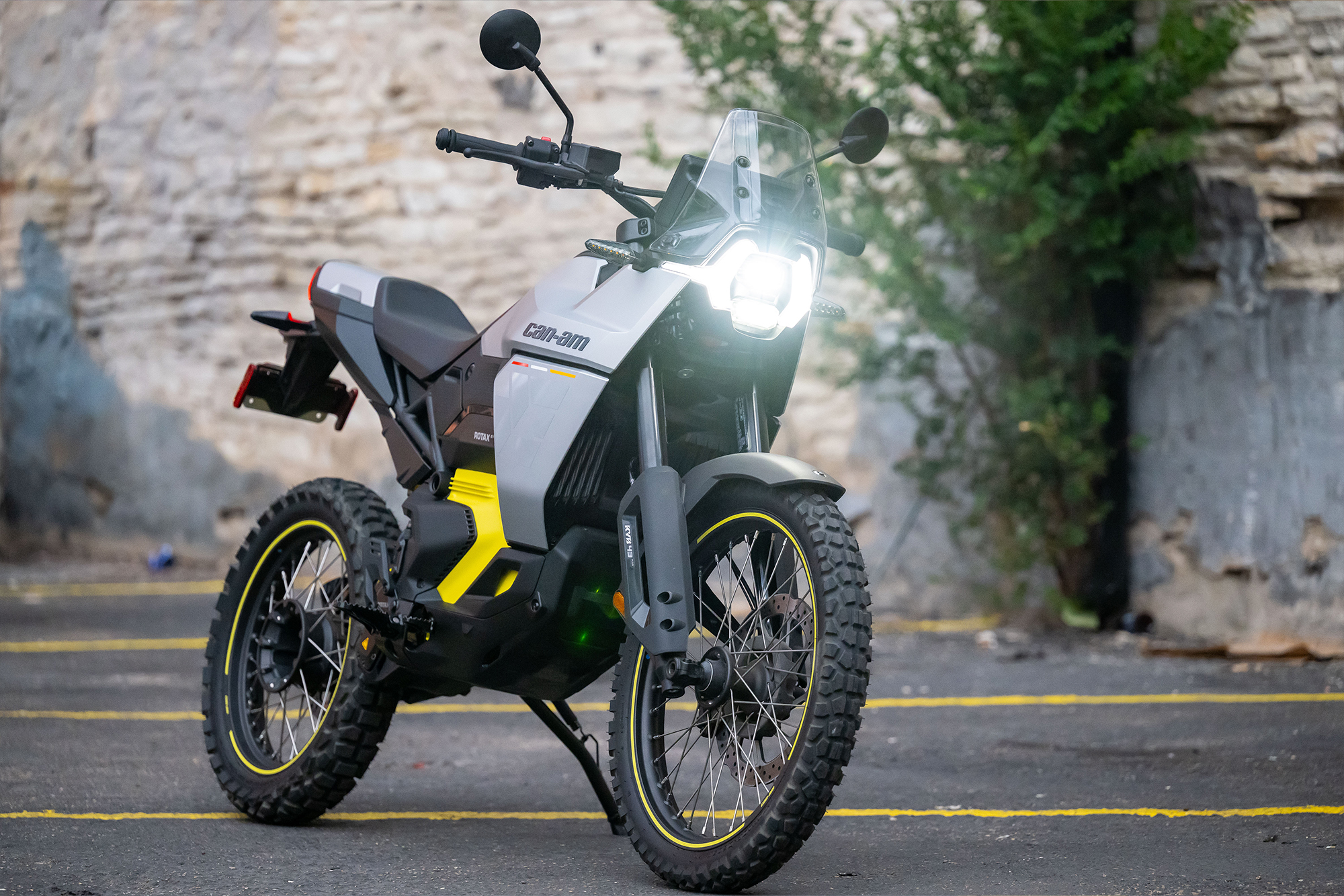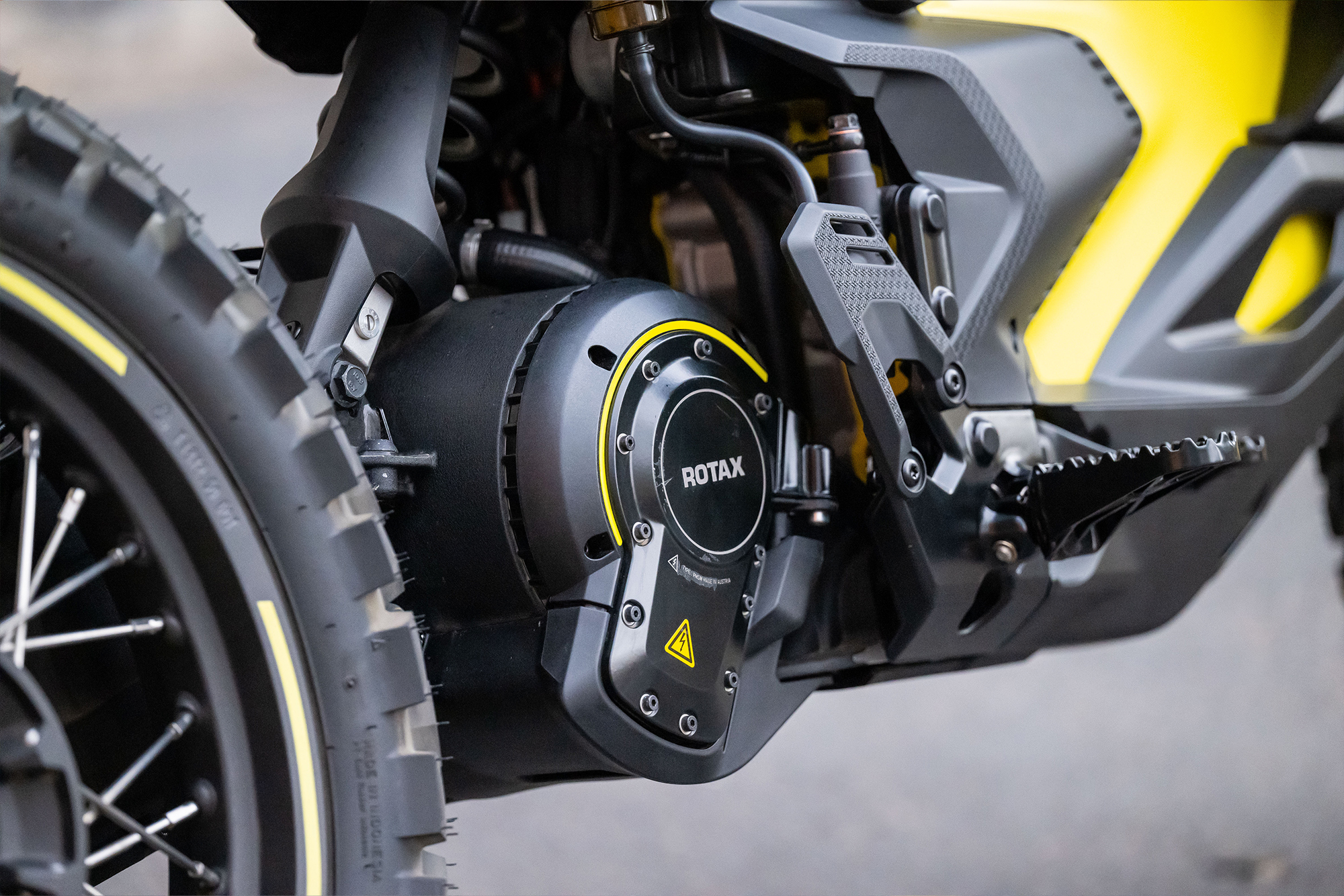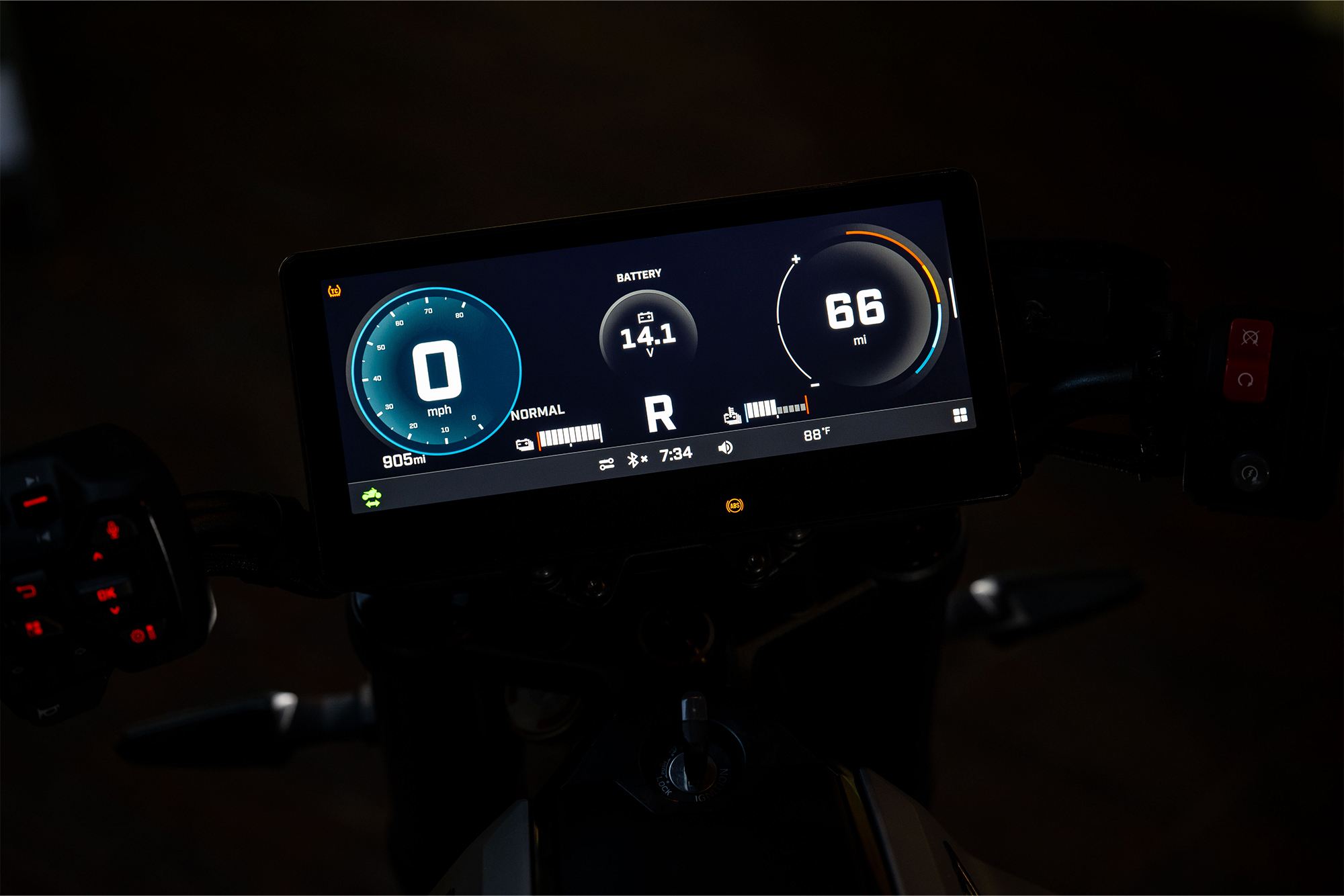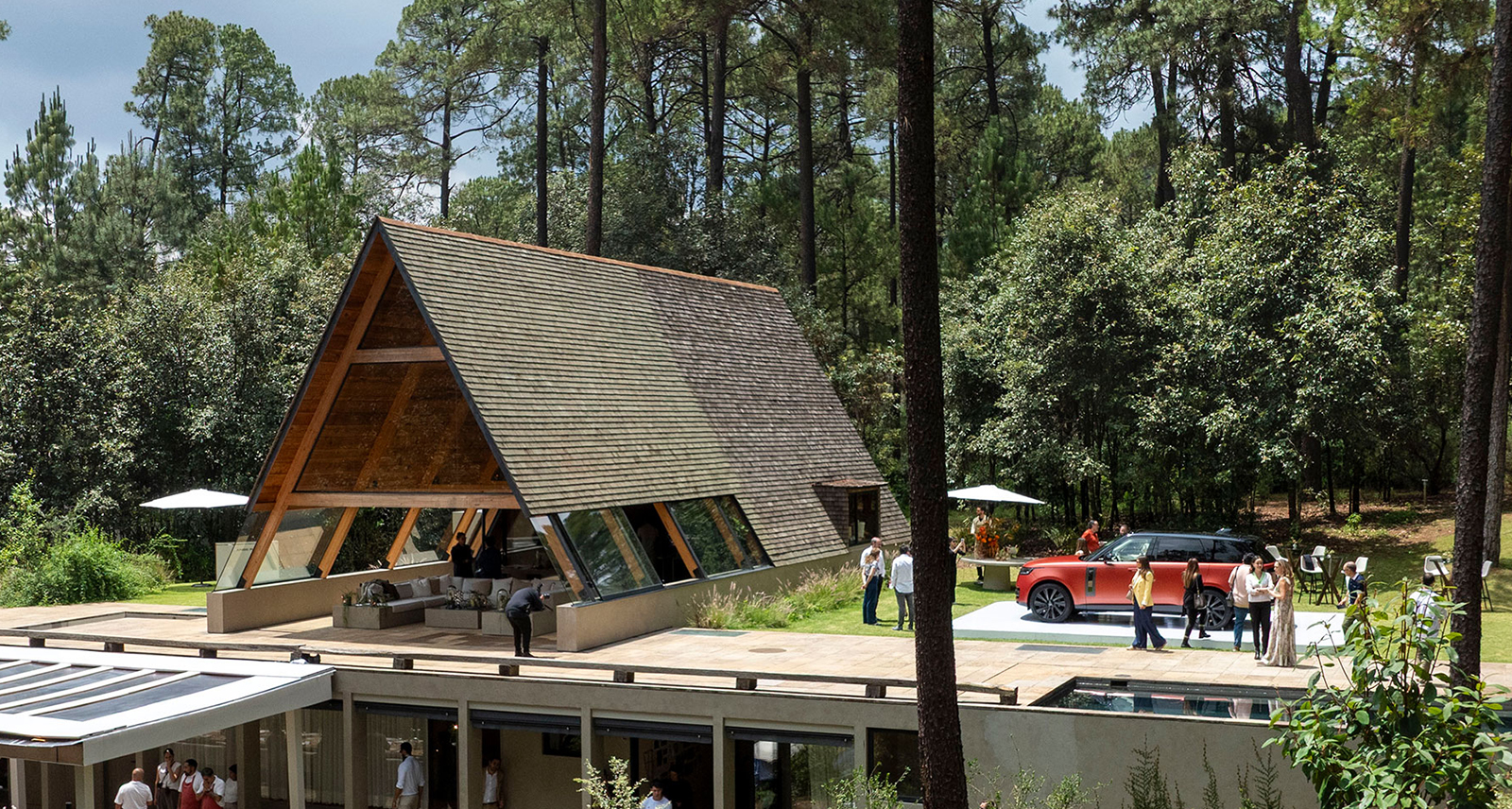The Electric 2025 Can-Am Origin Breaks Barriers
Throwing a leg over a new motorcycle always means a good day ahead, but doing so over a Canadian-made electric dual-sport motorcycle with roots in ‘70s motocross just hits different. Having grown up in rural Quebec in the 90s — less than an hour from Can-Am’s home turf in Valcourt — I was already familiar with much of the lore. A string of motocross bikes were built starting in 1973, and then Can-Am promptly swept the podium of the American Motorcyclist Association (AMA) 250cc motocross national championship in 1974, followed by subsequent other wins in a wide range of classes and categories globally. Despite ceasing production in 1987, I still remember seeing the occasional Can-Am terrorizing the backwoods trails with enough pace to put fear in the hearts of the most seasoned riders.
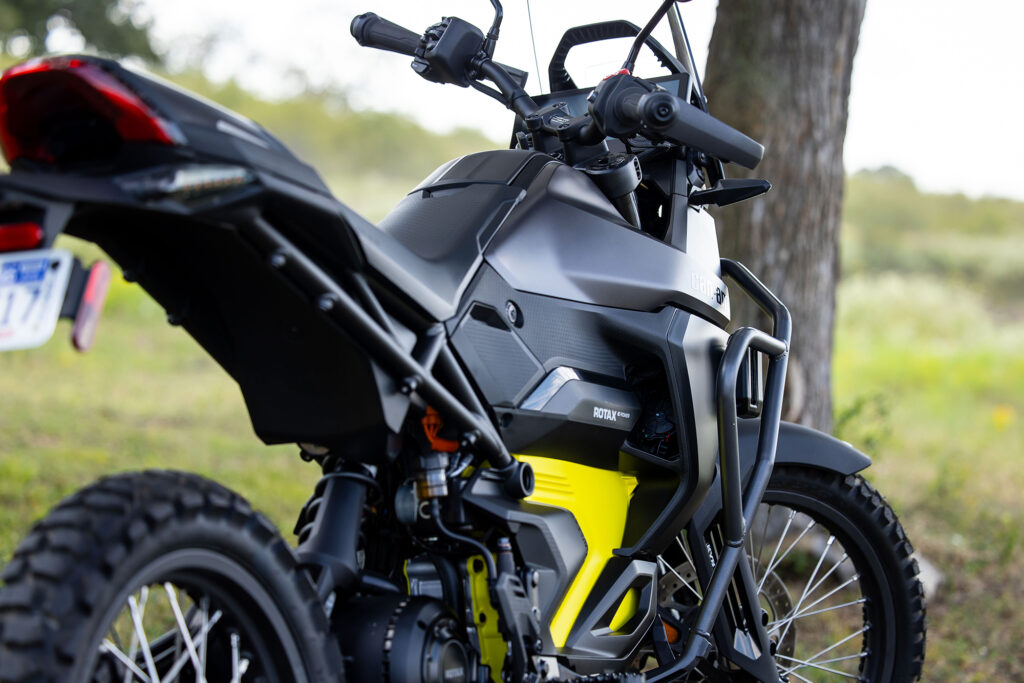
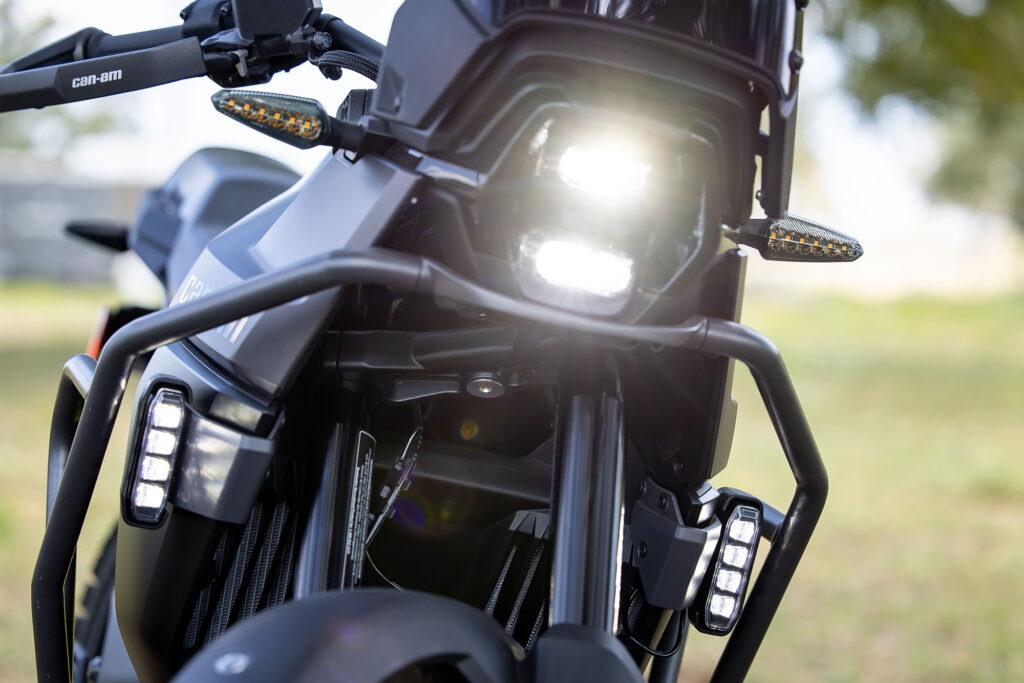

Much in the same way Can-Am came to dominate motocross, that same indomitable spirit echoes through the new Origin dual-sport motorcycle. Yes, it’s electric, and no, it wasn’t built as a motorsports initiative, however the new model holds to a similar agenda: to reign supreme over the burgeoning EV motorcycle scene. Unlike its sibling the street-focused Pulse — a compact commuter that looks just as at home in Toronto as it would in the busy streets of Paris or Munich — the Can-Am Origin’s on-/off-road design feels more connected to its home nation. Let’s face it, most Canadian roads are a little rough around the edges, and more riders are making their way into the dirt and gravel than ever before. Just look at any major motorcycle rally or social gathering from coast to coast; the percentage of bikes present with dual-sport capability keeps getting bigger.
Building a new electric motorcycle platform with off-road capability isn’t the simplest of feats, but Can-Am knew the Origin couldn’t be a product of half measures. Starting from its sealed motor and chaincase, the team’s engineers took on two hurdles in one pass — keeping its motor & driveline free of debris, and keeping its ride as silent as possible. As a conventional motorcycle rider, you’d be surprised to note the amount of noise generated by ancillary systems; a conventional motorcycle chain, suspension movement, and other items often generate noise that’s easily muted by the drone of an internal combustion engine. The Origin doesn’t benefit from such a buffer, and yet out on the trails it proved itself to be near whisper-quiet.
Our test track for the better part of an afternoon offered up seriously diverse terrain. Loose sand, backed gravel, rutted dirt, and even the occasional root system providing itself as an obstacle, the Origin ripped, tore, and powered through it all without skipping a beat. With 47 horsepower and 53 lbs-ft of torque on tap, the Origin lands in what we’d call middleweight territory — more powerful than the average 600cc dual-sport, but not as powerful as (though significantly lighter than) top-shelf adventure bikes.

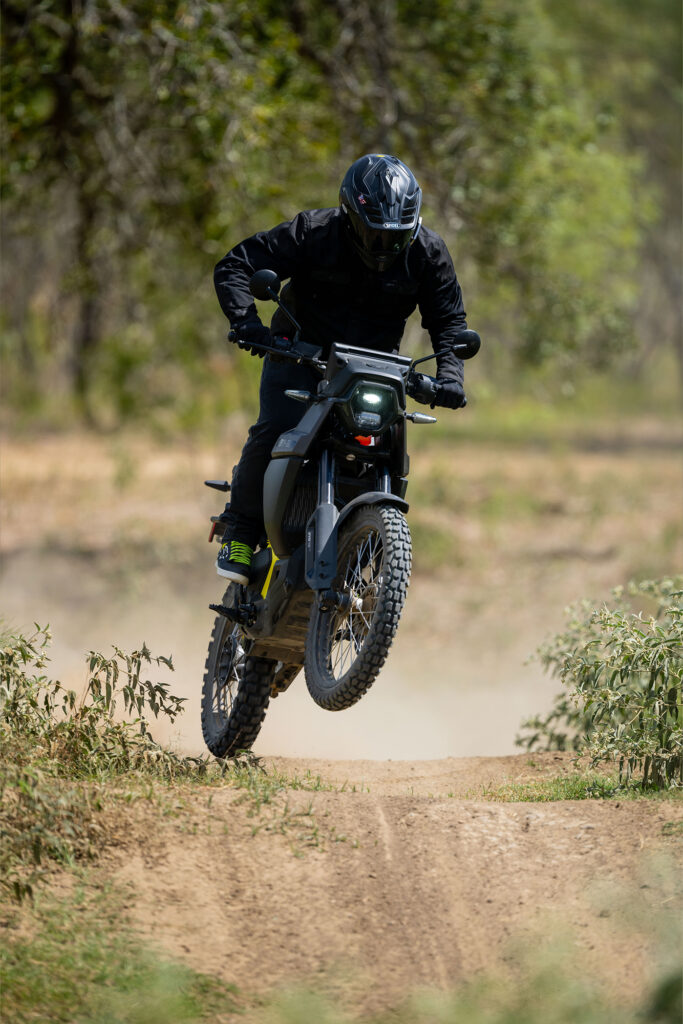
This sweet spot of dimensions and performance play a pivotal role in the Origin’s curb appeal, as much for the new rider as those more seasoned. Its power delivery is smooth, linear, and easily modulated thanks to its 6 riding modes and multiple settings for active and passive power regeneration. Meanwhile, the Origin is heavy enough to hold its own on an open highway alongside long-haul truckers yet light enough that one can pitch it around in the dirt with relative ease. What this all means from a practical standpoint is that the Origin is comfortable enough to ride your highway run to the cottage or favourite dirt track, and nimble enough to venture into the back forty without being completely dusted by your neighbour’s dedicated off-roader.
Now, this will require a charging pit-stop along the way, mind you, but that’s precisely why the Origin wasn’t built on the model of the full-sized adventure motorcycle. With up to 145 kilometres of range, and the ability to charge from 20-80% in roughly 50 minutes, it still falls within a relative window of practicality. Those ride days will require a nominal amount more planning when it comes to charging stop locations, however finding a suitable charger within a 100-ish kilometre radius of Canada’s urban centres generally isn’t a complex affair.
Much as was the case with the earlier era of EV adoption on four wheels, this conversation around range will be a dealbreaker for some and inconsequential to others. For those landing somewhere in the middle — trusting they aren’t so remote that the boundaries of charging points are actually problematic — I’d like to impart one last bit of perspective. While seeking out charging stations can be a bit more involved than finding the nearest gas station, the trade-off for days of riding without the engine noise and ambient heat of internal combustion is a remarkably worthwhile trade. Even with a good helmet and better earplugs, engine noise gets old. Even with the most breathable riding gear, sitting on a conventional motorcycle in traffic on a hot summer day is an uncomfortable and horribly sweaty affair. Meanwhile, cruising along remote wooded trails and hearing nothing beyond nature and the wind is a priceless experience that’s worth a bit of sacrifice, as far as I’m concerned.
Learn more about the Can-Am Origin dual-sport electric motorcycle here.
